Stunning New Landmark Concert Hall in Poland Boasts Largest L-ISA Immersive System in Central Europe Stunning New Landmark Concert Hall in Poland Boasts Largest L-ISA Immersive Syst...
Europe’s new cultural gem, Cavatina Hall, houses an unrivaled AV system with L-Acoustics world-class spatial sound, and an advanced audio network
Bielsko-Biała, Poland – April 2022 – A unique multi-functional building combining office and cultural spaces, Poland’s newly-constructed Cavatina Hall opened its doors at the start of this year. It is the only privately owned and funded concert hall in the country and its owners’ uncompromising approach to design demonstrates their ambition for the venue to become a landmark on Europe’s cultural map. The six-story multifunctional building counts over 9,000 square meters of A-class office space, a chamber music hall, and a cutting-edge recording studio. But the crown jewel of the building is the 1,000-capacity concert hall which boasts a state-of-the-art stage, with AV technology integrated into an extensive digital and analog network, and L-Acoustics’ progressive L-ISA Immersive Hyperreal sound technology, delivered by Warsaw-based L-Acoustics Certified Provider Distributor, Audio Plus.
The venue was created by Cavatina Holding, one of Poland’s largest property development companies. The stunning building is strategically situated in the multi-cultural Southern Poland city of Bielsko-Biała, an industrial and artistic hub nestled in the beautiful Beskidy mountains. Among the events hosted in the city is the historic jazz festival Bielska Zadymka Jazzowa, which now takes place in Cavatina Hall.
“We can confidently claim that Cavatina Hall is one of the best facilities of its kind in the world, combining commercial industry with the promotion of art in a unique and modern building,” explains Katarzyna Pytlarczyk, head of Fiducia Foundation, the administrator of Cavatina Hall. “The concert hall has been designed so that all types of music can be produced perfectly, and its acoustics make it possible to bring out the full range of color during symphonic and chamber concerts as well as pop and rock performances.” Every space in Cavatina Hall has been constructed to the highest standards, from the seating to the subtly concealed resonance boxes on the walls and balustrades and the automated sliding acoustic curtains. The choice to install L-Acoustics L-ISA technology is a logical consequence of this approach. “Because we are among only a few venues that have such a system, it puts us at the forefront of European venues,” adds Marcin Smolik, Producer and Managing Director at Cavatina Hall. “The interest in the technology is huge. It is a treat for artists, and for the audience, it means quality.”
Due to its years of experience in high-profile AV installations, Audio Plus was appointed as the technical contractor. Briefed with selecting top-of-the-range technology and providing expert support throughout the complex design, the Audio Plus team, and its chosen suppliers and sub-contractors, were the sole contractors to work on the project from its inception until completion, thus ensuring the successful integration of the entire technical infrastructure.
“When we were invited to manage the AV installation, we knew this project would be exceptional. We knew this would be a place where we could design the sound technology of the future,” recalls Sylwester Wojcieszek from SDST, who was responsible for the technology design. “During initial discussions, it was quickly decided that we would design a 360-degree immersive sound system to fulfill this desire, and the best one to fit that brief is L-Acoustics L-ISA technology.”
“Throughout the decades of using stereo for concert sound, we have accepted compromises,” continues Willi Klein, Application Engineer at L-Acoustics. “The perception of sound spatialization for large audience areas was always limited; we heard sound from the L/R loudspeaker placement instead of hearing instruments from where they are placed on stage. L-ISA technology gives the listener a natural experience, essentially delivering what you would hear if there were no sound reinforcement, and you hear the instruments from where they are physically.” L-ISA is fully immersive and reproduces the same sound image for the entire audience, regardless of where the audience member is located.
Cavatina’s team went to great lengths to ensure the quality of the system by submitting the technical design to be audited by the London office of Sound Space Vision. A virtual acoustic model of the hall, including wooden elements such as the waves in the sub-balconies, a combination of resonance boxes each tuned to a different frequency, was also independently tested in the Acoustics Department laboratory of the Institute of Building Technology in Warsaw. This ensured the acoustic and technological designs would work in perfect harmony and further validate the trust placed in Audio Plus.
The specification ranks Cavatina Hall as a venue with one of the largest L-ISA installations in Europe and one in which Audio Plus delivers the ultimate in audio fidelity. In total, 141 L-Acoustics cabinets are distributed in a 360-degree configuration. The frontal system is based on seven hangs of six Kiva II and an SB15m spanning the width of the stage, with further low frequency delivered by four KS28 subs suspended above the audience in an end-fire arrangement. Eight 5XT serve spatial front-fill, while a further nine 5XT serve audio for the seats in the two balconies behind the stage. Two additional X8 cabinets are used as in-fill, and six X8 cover the balconies, while 28 further X8, 14 at each balcony level, are placed as effect cabinets. The system is controlled by two redundant L-ISA Processors.
Stage monitoring is managed by a total of 23 cabinets, including X8, X12, and X15HiQ. The entire system is powered by a combination of LA4X, LA2Xi and LA12X amplified controllers, which give a combined 108 kW of power. In addition, to serve events in other spaces such as the foyer or chamber hall, Cavatina Hall has a mobile Syva system, chosen for its aesthetic appeal and audio quality.
Overall, aesthetics was an important factor for Cavatina; even in a 1000-seat hall, the audio system is unobtrusive and, in fact, practically invisible. Significantly, Cavatina Hall is the first concert hall in Poland to take advantage of automatic object tracking, which allows the movements of musicians, actors, or speakers to be tracked and mirrored by the sound and lighting systems. Thanks to this, it is also possible to automate stage movements and even trigger multimedia actions automatically. The heart of the system is the TTA Stagetracker Core processor, which can communicate with the system’s transmitters via a system of antennas. The event director has 32 Stagetracker Tag transmitters at their disposal, which they can assign to any musician or actor.
Much thought was given to the audio network; it is one of the largest in the country. A total of 43 signal connections are installed across the venue, located in the stage, audience, and backstage area, in the entrance hall, recording studio, on the lighting bridges, the roof patio for external concerts, and in the underground garage for broadcast vehicles. Each connection has analog and digital inputs – of which coaxial, optical and CAT 6A are available – and all signals are fed to the amplification room, where they can be matched freely. There are also direct twisted pairs at the four FOH and monitor mix positions, enabling easy connection for any visiting consoles. Because signals can be routed anywhere in any format, complexity can be achieved without fighting the system. The signal distribution system not only makes it easy to realize live events in the hall, and can also record and broadcast them live from any location within the venue, such as the venue’s recording studio.
The concert hall boasts four of the latest DiGiCo Quantum 338 consoles, one for front of house and one for monitors. Signal distribution between FOH, , and the recording studio is via Optocore, with AuviTran convertors forming an integrated network. Signals to the studio or broadcast truck are via either Dante, MADI, or analog, depending on the end devise. The Optocore/Auvitran system can handle up to 1856 digital signals. Analog signals are split by a 96-channel analog splitter, whilst Optocore can handle a further 96 analog signals delivering the most complete, versatile way method of signal distribution.
Cavatina’s Smolik explains that the venue “has a rule that it is not the artist who is the star, but the audience.” Tomasz Ibrom from Audio Plus, responsible for the entire installation, agrees that the team’s aim was to provide the highest quality sound experience for the artists and especially for the audience: “Cavatina Hall can accommodate almost a thousand people, but thanks to L-Acoustics, it does not lose its intimate atmosphere. Care has been taken to ensure that every member of the audience has good stage visibility and a personal listening experience.”
Thanks to Audio Plus’s innovative and comprehensive approach to design, Cavatina Hall is a true milestone in concert sound, for which the company deservedly won Poland’s Builder magazine Top Builder Awards for innovation in the Technology category.
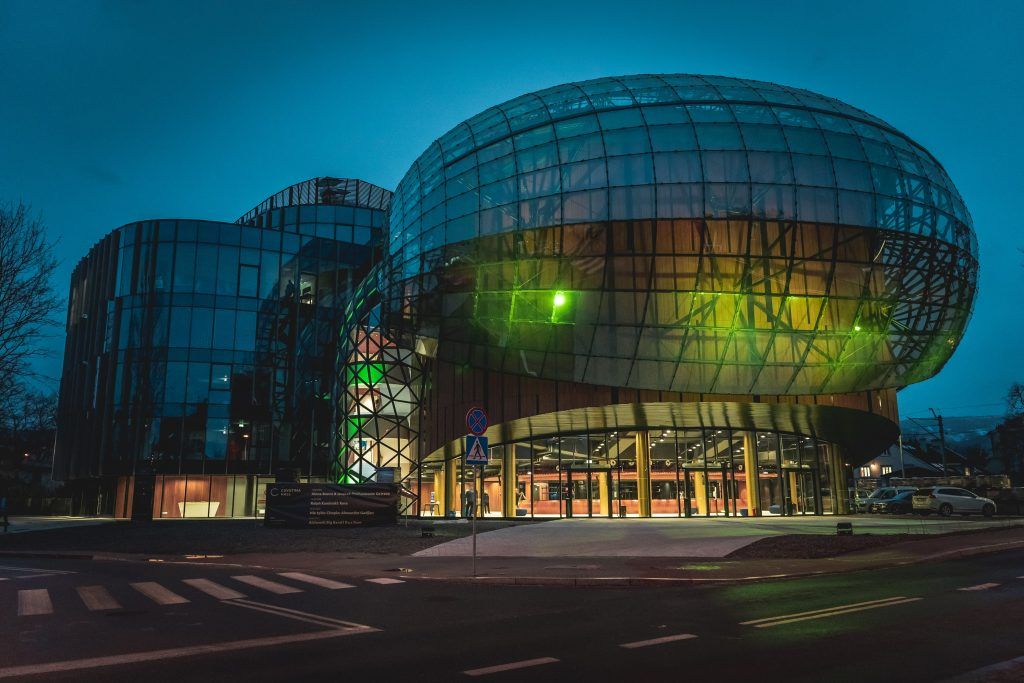
The six-storey multifunctional Cavatina Hall features L-Acoustics progressive L-ISA Immersive Hyperreal sound technology. 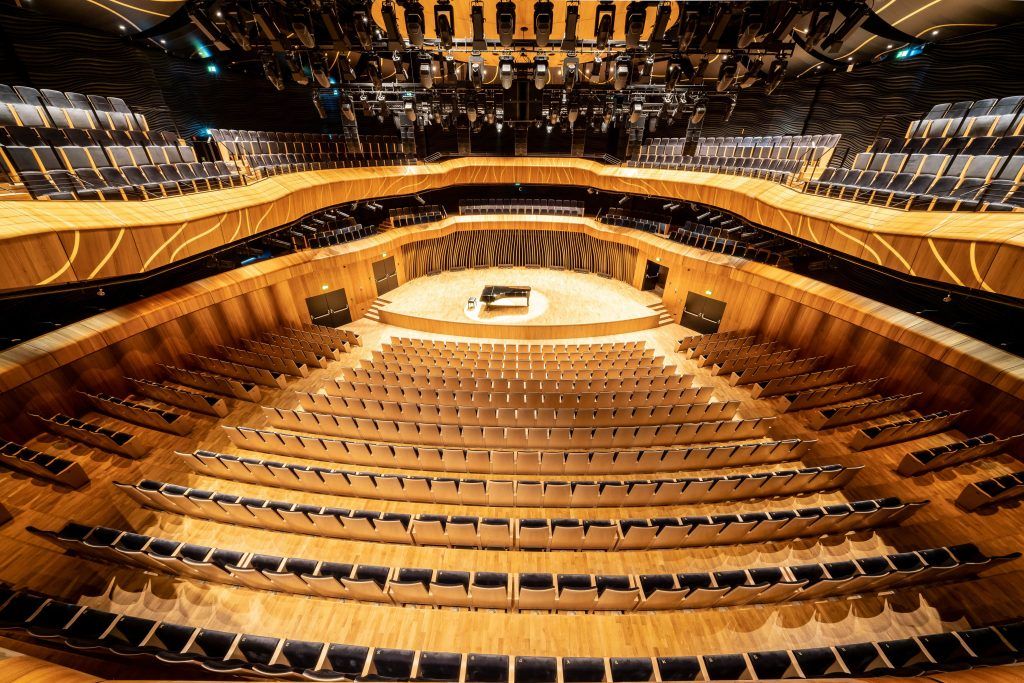
Cavatina Hall’s 1,000-capacity concert hall has AV technology integrated into an extensive digital and analogue network, including L-Acoustics progressive L-ISA Immersive Hyperreal sound technology. 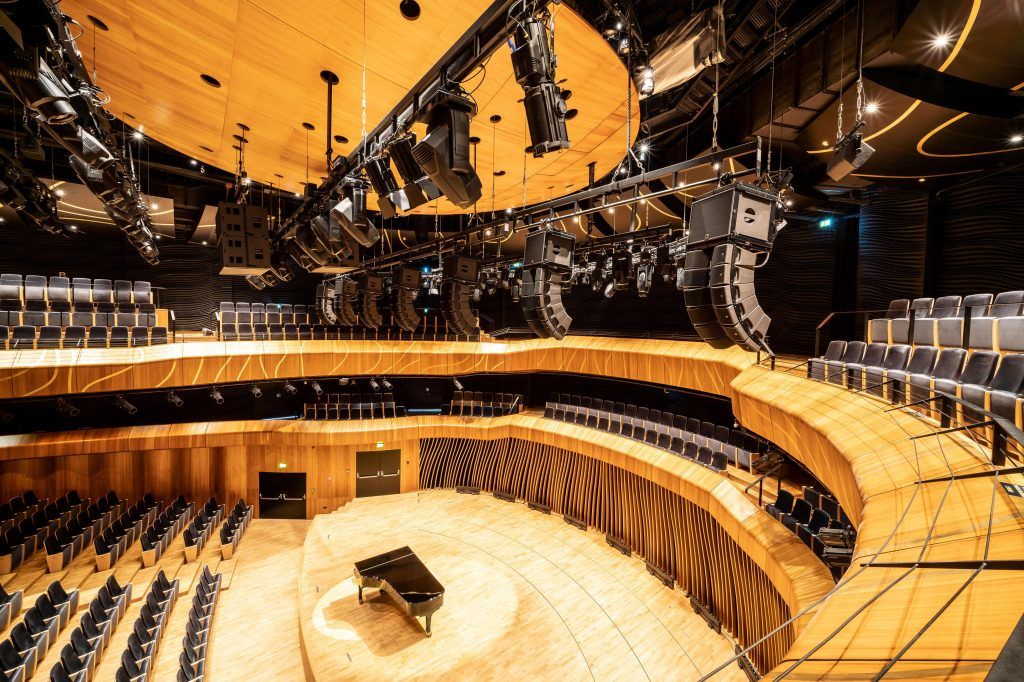
Cavatina’s L-ISA frontal system is based on seven hangs L-Acoustics Kiva II and an SB15m spanning the width of the stage. 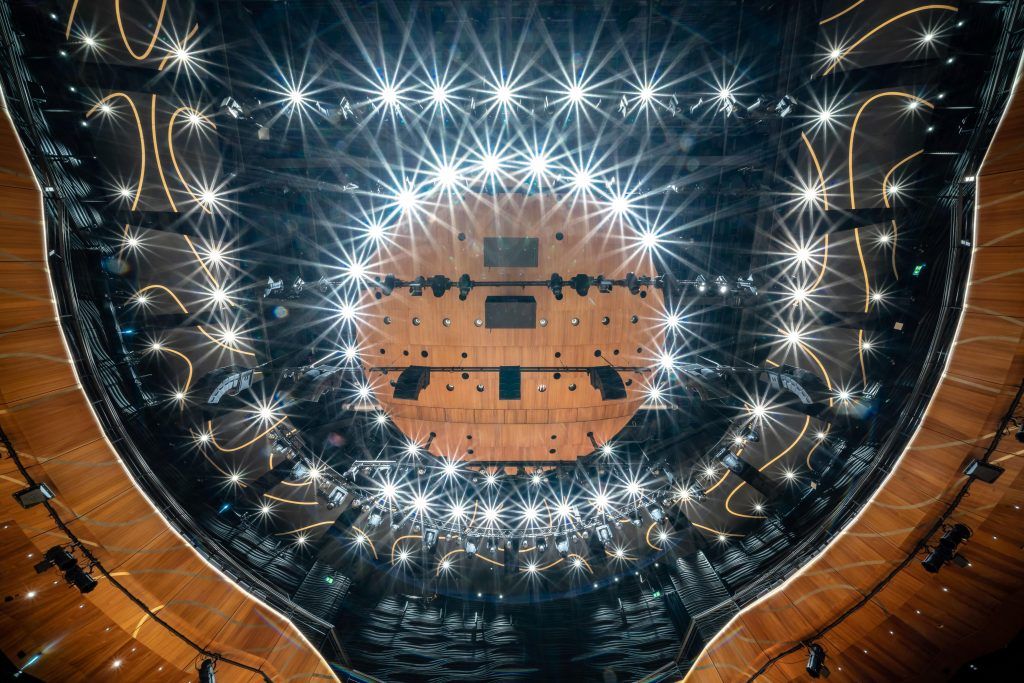
Cavatina’s L-ISA frontal system is based on seven hangs L-Acoustics Kiva II and an SB15m spanning the width of the stage. 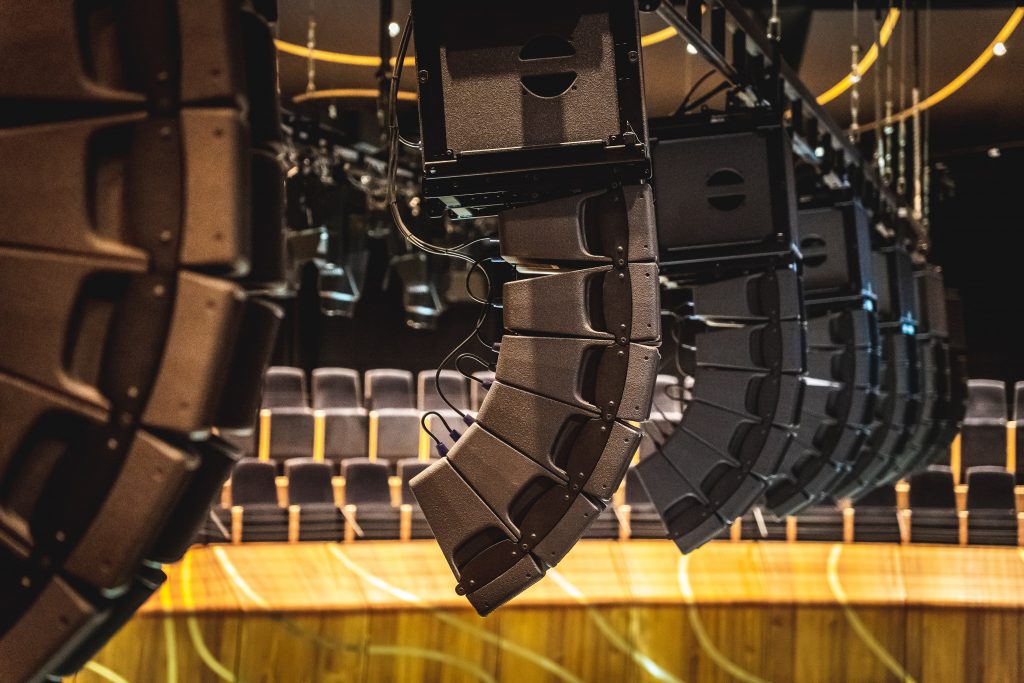
Close up of the L-ISA frontal system 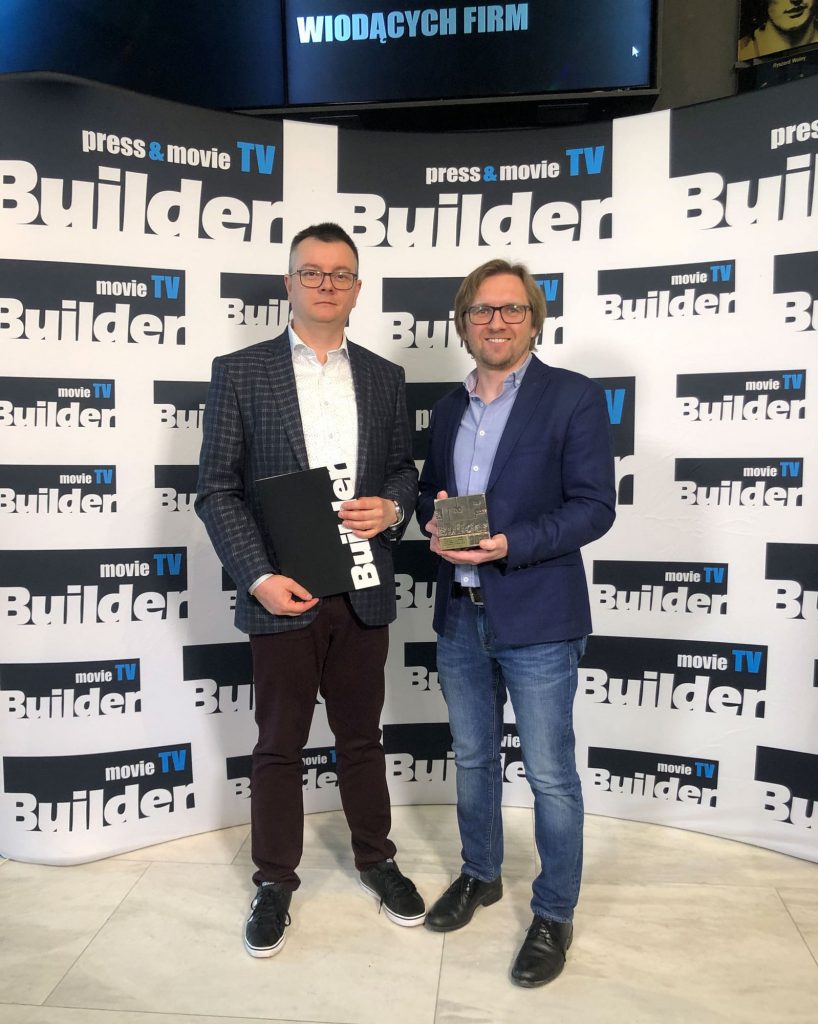
Audio Plus Marketing Director Pawel Kuhn (left) and SDST Technology Designer Sylwester Wojcieszek (right) accepting the Top Builder Award.